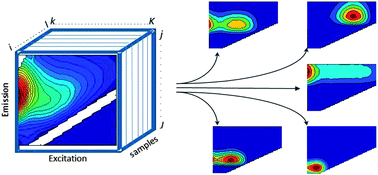PARAllel FACtor analysis (PARAFAC) has been a tremendously instrumental tool for interpreting a wide-range of information including spectral, NMR, GS-MS, (HP)LC-DAD, EEG, geospatial, radar, sensory, metabolomic and image data. In effect, application of PARAFAC has resulted in advancements for diverse research areas including medical, pharmaceutical, food, environmental, social and information science. Notably, PARAFAC applications pertaining to analysis of fluorescence excitation emission matrices have been particularly popular. However, users are often confronted with many practical and analytical challenges when using PARAFAC for real-life applications.
To help simplify this procedure, Kathleen R. Murphy from Australia, along with Colin A. Stedmon and other colleagues from Denmark, provide an informative tutorial of the practical application of PARAFAC for fluorescence data analysis. This review provides deeper insight into preparing, modelling and interpreting fluorescence datasets particularly for environmental samples, and demonstrates a new software tool to facilitate PARAFAC analysis.

From Database to Data Interpretation Using PARAFAC
Click on the link below to find out more. This paper will be free to read for the next three weeks.
Fluorescence spectroscopy and multi-way techniques. PARAFAC
K. R. Murphy, C. A. Stedmon, D. Graeber and R. Bro
Anal. Methods, 2013, Advance Article
DOI: 10.1039/C3AY41160E
Let us know what your thoughts are by leaving a comment below!










